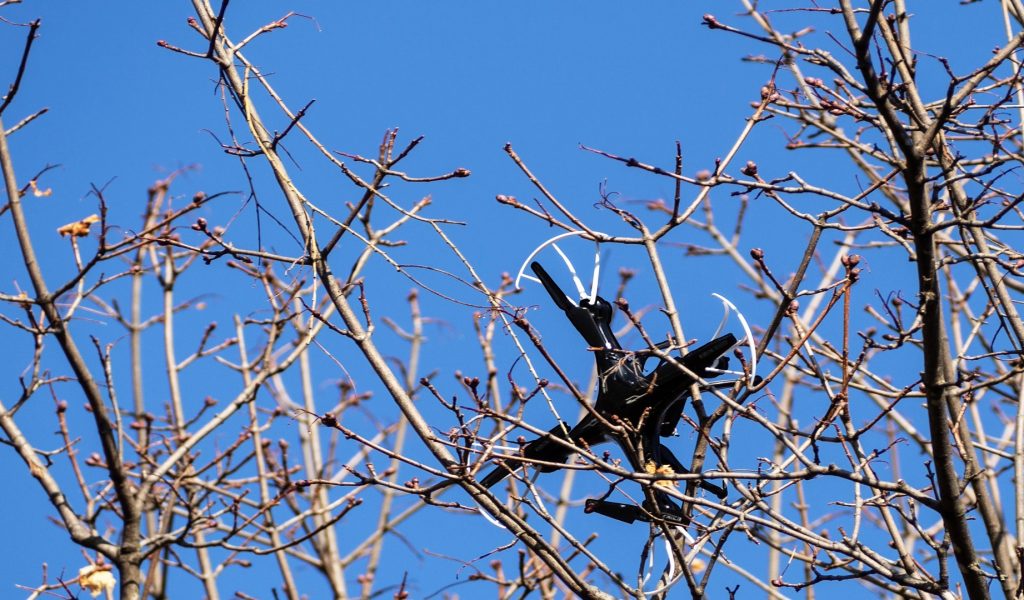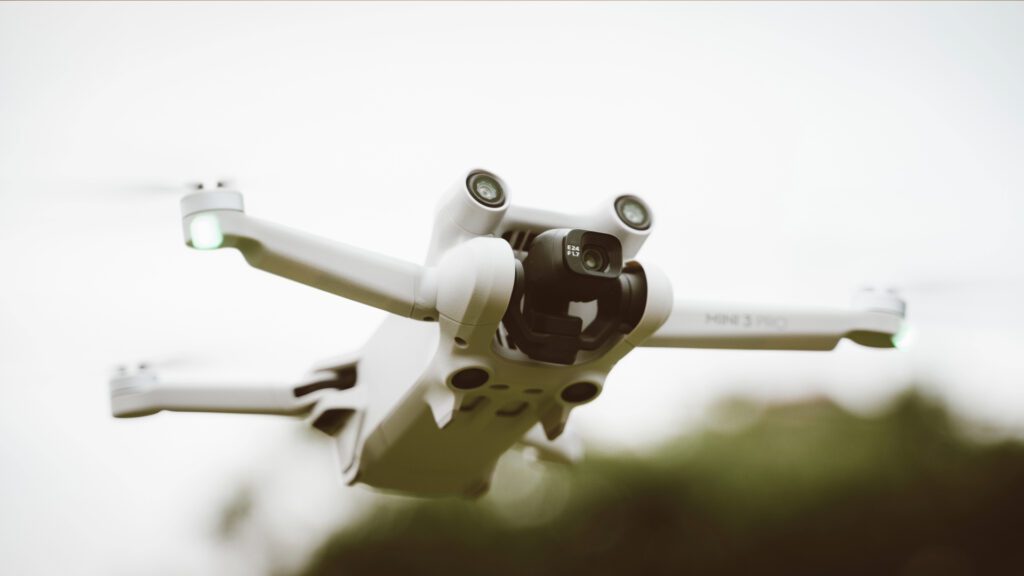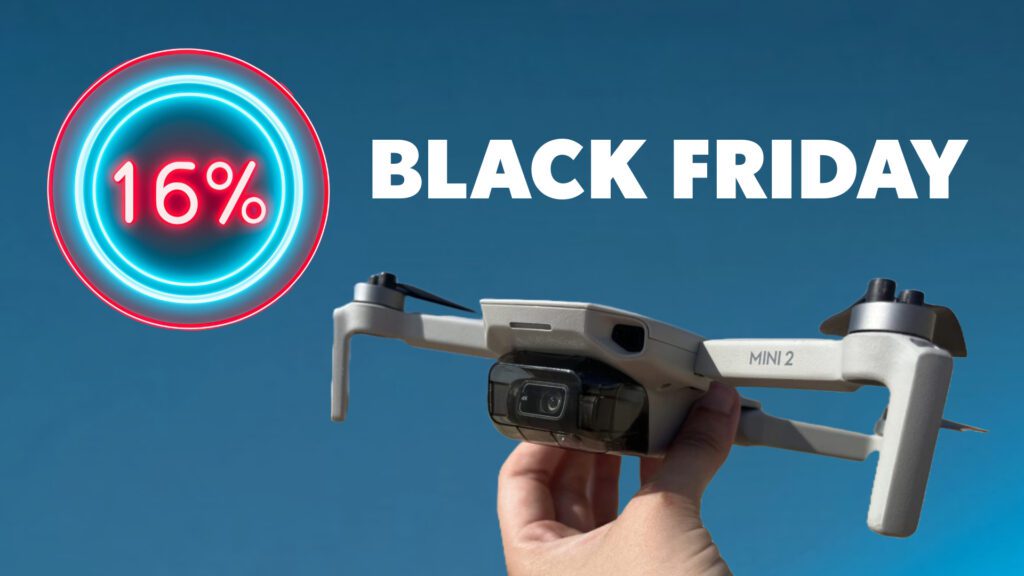Ever been in that situation where you’re having fun flying your drone and bam… where’s it gone? You’ve now got a lost drone on your hands. It happens and it can be scary at first. After all, drones are expensive to purchase and repair.
However, this article is here to assist you with methods of locating your lost drone. Whilst also delving into the reasons why drones get lost, as well as ways to secure your drone in the air to prevent the likeliness of it happening again.
What causes a drone to get lost?
Drones have several cool features and perks that minimise the ability to lose them. Despite this, drones can still be lost for a number of reasons. Whilst accidents are likely as well as the possibility of the drone being stolen, there can be other reasons why a drone can get lost.
Impact
Drones tend to come with obstacle-avoidance features and sensors to limit the possibility of them bashing into something. Modern drones are getting more technical and smarter at detecting the surrounding environment. That said, there’s still a chance of them bashing into something in a certain situation. If you don’t own a drone with any of these sensors, it can become quite easy for the drone to collide with an object or structure.
Impact with objects poses a significant risk; collisions can disorient the drone, causing it to deviate from its course.
Signal loss
Signal loss is a likely reason behind someone losing their drone. GPS signal loss hinders the drone’s ability to navigate accurately, increasing the chances of it straying off course.
Connection can also be lost between the remote controller and drone, especially in remote areas. A lack of a strong connection between the controller and the drone can result in a loss of control, possibly causing the drone to become lost.
Battery level
Low battery levels can put your drone in a vulnerable position where it is likely to fall, or crash, causing you to lose it. Battery levels, when critically low, can force drones into emergency landings or automatic return-home procedures. This can result in the drone potentially landing in unpredictable locations.
Out of sight
This is a simple yet likely way to lose your drone. Whilst you are required by law to always maintain visual line of sight (VLoS) of your drone, there are instances when it could disappear behind a tree or cloud. Once it’s out of sight, it increases the risk of the drone losing control and potentially crashing.
Struggle with drone anxiety? Check out our tips on how to handle drone anxiety.
How to find a lost drone
First and foremost, you need to remain calm. Any spontaneous or erratic behaviour could result in damage to your drone.
Approaching the problem of a lost drone with a calm mind is key to bringing it down to land safely or finding it successfully.
Use Find My Drone
If you own a DJI drone, you will already be using the DJI Fly or DJI GO 4 app to fly your drone. However, you may not know there is a Find My Drone feature in this app.
This should be your first point of call if you lose your DJI drone. You can activate this by going into your settings, on ‘Safety’ and clicking Find My Drone.
This will provide you with a map – showing useful things like your current position and the drone’s last known location – making it easier to find your drone. If the drone is still turned on and in radius, you can tap the “Start Flashing and Beeping’ button. Clicking this feature will enable the drone to flash and make a noise. This is useful to look out for in the air as well as if the drone has crashed and you need to find it easier.
Use the Return-to-Home feature
If you lose your drone in the air, the best option is to bring it back and return it to home.
The “Return to Home” (RTH) feature is a reliable method to bring your drone back in case it gets lost. When activated, the drone uses its GPS functionality to navigate back to the designated takeoff point. It’s a valuable feature, especially if you lose visual sight of your drone.
Make sure to set the RTH point to an appropriate height and that the environmental conditions allow for a safe return. If you are having signal issues connecting to your drone, try moving and pointing the controller in different directions to regain signal.
Locate it manually
If the GPS tracker fails, it might be a case where you need to track the drone down manually. Although it may be more of a tedious process, it can prove effective.
Drones typically emit a buzzing noise from the motors, making them audible whilst in flight. So if it’s nearby in the air, you’ll probably hear it and be able to track it down. If you’re in the whereabouts of where the drone was flying and don’t hear any buzzing noise, it might be an indication that the drone may have fallen or crashed.
Move to higher ground
Moving to a higher vantage point will give you a clear line of sight to locate your drone. Guaranteed, this may not always be an option depending on where you are droning.
This will make it easier to spot your drone, especially if it is stuck in trees or tall grass. The benefit of higher ground can also enhance your GPS signal. Drones rely on GPS for location tracking, and moving to an elevated position can improve the accuracy of locating the drone’s last position.
Seek community help
If all of the options have been exhausted, it may be time to ask for help.
Social media can be a great and effective way to reach out and try to find your lost drone. Facebook and Twitter have become great platforms where drone enthusiasts can come together and ask each other questions. There are also groups and communities you can join, potentially a Lost and Found group in your local area. Posting your lost drone onto these groups means there’s more than a pair of eyes searching for it, increasing your chances of finding it.
Even if you’re unaware of the drone’s location, additional searchers may discover it by looking at areas that might have been overlooked.
Landing your drone on a drone landing pad is the best way to ensure a safe landing. Check out the top drone landing pads of 2023.
How to reduce the chances of a lost drone
Fly in open areas
Flying your drone in open air environments is key to minimising the risk of losing your drone. You are less likely to lose it behind objects. Open spaces provide a clear and unobstructed flight path, reducing the risk of the drone colliding with objects such as trees or other obstacles. It is much easier to keep an eye on the drone whilst in flight.
An open environment also allows the drone to maintain a stable GPS signal, ensuring reliable navigation and minimising the likelihood of signal loss.
Be cautious
All in all, you must always be cautious when piloting your drone. Any risky or careless behaviour could result in accidents and hazards.
For example, take extra care when flying your drone in cloudy conditions. A drone in the sky can easily hide between clouds and quickly become less visible. Panicking may cause you to make rash decisions and you may end up in a worse position.
Always maintain Visual Line of Sight
Maintaining Visual Line of Sight (VLoS) will immensely reduce the chances of losing your drone during flight.
This is something you should be following anyway as maintaining VLoS is a legal requirement when flying a drone. But it is worth pointing out as clouds or structures can easily put your drone out of sight unexpectedly.
By consistently keeping the drone within direct line of sight, you can closely monitor its position and surroundings, allowing you to respond quickly in the case of any unexpected obstacles, conditions or technical issues. And it also allows you to better judge distances and potential hazards.
Don’t make the same mistake. Read the most common mistakes most drone beginners make.
Verify your homepoint
Verifying the home point allows the drone to set a precise reference location for its Return To Home (RTH) feature, reducing the chances of it getting lost.
This ensures that when activated, the drone will navigate back to the certified home point, even in the event of signal loss or other disruptions. You can enable the drone to return-to-home in the case of signal loss in the DJI Go app settings.
The home point must be verified before drone takeoff. This is especially important if you are operating the drone from different locations, as it prevents the risk of the drone returning to an outdated or incorrect home point.
Adjust RTH to an appropriate height
Ensuring that the Return-to-Home (RTH) feature is adjusted to an appropriate height will reduce the chances of losing your drone. The RTH function acts as a potential get-out-of-jail-free card, automatically bringing the drone back to its takeoff point if in any doubt.
By setting the RTH altitude to an adequate height, the drone ascends above potential obstacles like trees, buildings, or uneven terrain during its return journey. However, if this height isn’t set high enough, you run the risk of the drone colliding with obstacles on its way back. Proper calibration of the RTH altitude is a key preventive measure to safeguard the drone and enhance its safe return in various flying conditions.
Want to know more about how to properly maintain your drone for optimal performance? Read our tips on drone maintenance and care.
Conclusion
Finding a lost drone needs not to be difficult or scary. Equipping yourself with methods to retrieve a lost drone will make it a much easier process.
Remember to always fly with care and caution, as this will minimise the chances of your drone getting lost. Luckily in most cases, the drone will use its GPS technology to return to its home location and you’ll find it easily. In other cases, it may be more of a case of tracking the drone down yourself or reaching out to others for assistance.
FAQs: How to find and retrieve a lost drone
What if I lose sight of my drone?
If you lose sight of your drone while flying, try to remain calm and avoid making any sudden actions.
Activate the Return-to-Home (RTH) feature if available, and use the Find My Drone feature in the app. You could also manually track the drone by listening fo the buzzing noise whilst it’s in the air. The absence of the noise could indicate that the drone is no longer in flight.
Is there an app to find my DJI drone?
If you are piloting a DJI drone, you will probably be using the DJI Go 4 app or Fly app.
If you have lost your drone, you can use the Find My Drone feature on the app. This will show a map of the last drone’s known location and your current position. You can also select for the drone to beep and flash, making it easier for you to find your drone if it has crashed.
What should I do if I lose my drone?
To locate your lost drone, try using the location feature on your drone app. Some drones have a location button to indicate where the drone has landed. This may not always be applicable if you’re in a remote area, for example. In this case, try to find higher ground to get the best signal connection possible.
If in any doubt, you could also try activating the Return-To-Home feature. Most drones are equipped with this feature to automatically return to the takeoff point when the signal is lost, for example. Make sure this feature is set to an appropriate height to prevent any potential collisions.




